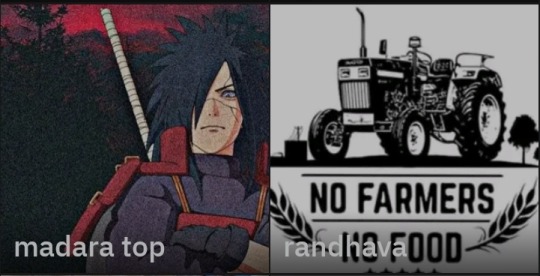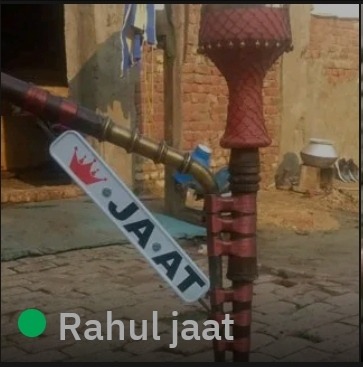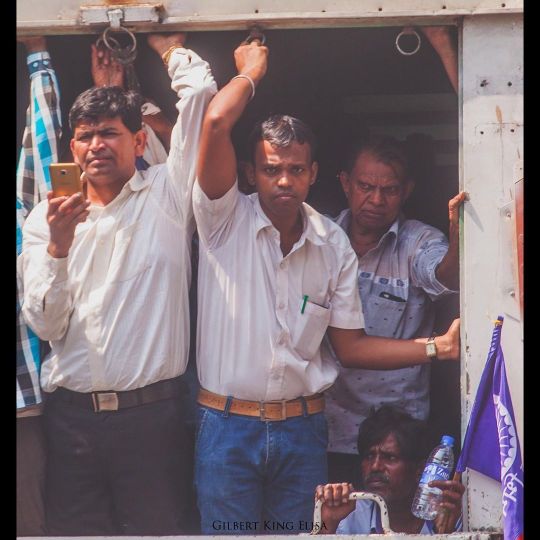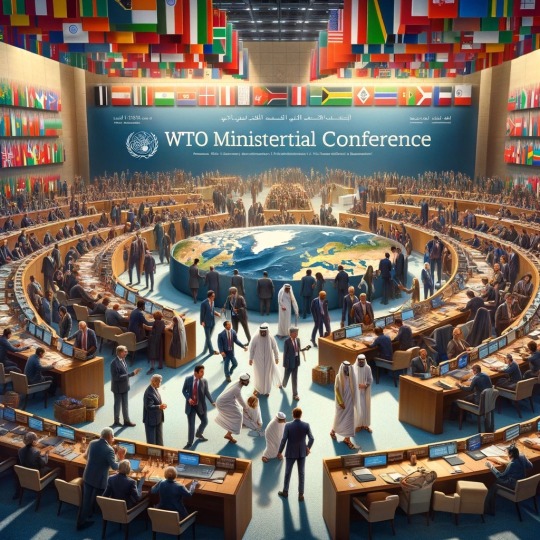#farmer protest in India
Explore tagged Tumblr posts
Text
Indian resistance is so fucking funny cause we're such an unserious people. Never stop
136 notes
·
View notes
Text
(subtitles are autogenerated and are not particularly accurate)
🇮🇳 🚜 🚨
MASSIVE FARMER'S PROTESTS OUTSIDE INDIAN CAPITAL AND ACROSS THE NORTH OF THE COUNTRY
📹 Massive protests are confronted with teargas, armed police with rubber bullets and drones as thousands of farmers, mostly in India's northern Punjab region, protest on Tuesday demanding a Minimum Support Price or MSP for all crops to raise farmer's income.
Dozens of Farmer's unions participated in the strikes, calling for a "Delhi Chalo" or March to Delhi.
Police in and around the capital have erected barriers on highways surrounding New Delhi, and have begun firing tear gas and rubber bullets at the approaching farmers.
Tractors, along with thousands of farm hands, are seen in footage nearing the outskirts of New Delhi, in the northern Haryana state, being confronted by officers with gas and smoke bombs, including some dropped from buzzing drones overhead.
Authorities have shut down Internet services in some areas where protestors approach, and have erected concrete roadblocks and barriers, while local officials have banned public gatherings and are deploying extra security personnel.
Officials in New Delhi emphasized that sufficient police and paramilitary personnel have been deployed to all entry points to the city.
Farmers are demanding dozens of changes, including a new MSP or floor price for crops to increase and guarantee farmer income, as well as a full debit waiver, according to local union officials.
Political officials in New Delhi say they're open to talks, with Agriculture Minister, Arjun Munda telling reporters on Tuesday that the Federal government already is "bound to protect the interest of farmers."
"Farmers also need to understand that inconvenience shouldn’t be caused to the public,” Minister Munda said, adding the government was always ready for negotiations with the Farmer's unions.
“We are ready to do everything possible to find a solution to this issue,” he said.
#source
#videosource
@WorkerSolidarityNews
#india#indian farmers protests#farmers protest#india farmer protest#minimum support price#farmers#farmer unions#unions#labor unions#india news#indian politics#indian news#india protests#indian unions#agriculture#politics#news#geopolitics#world news#global news#international news#breaking news#current events#asia#south asia#india protest#agricultural workers#workers#labor movement
70 notes
·
View notes
Text

Unofficial flag and logo used in New York protests (showing support for the Indian farmers protests in 2021)
#agriculture #farming #farm #farmer #farmers protests #agri #India #NYC #New York
8 notes
·
View notes
Text
"After the crucial second round of talks with the government failed to make any headway, the protesting farmers carried on with their Delhi Chalo march on Tuesday. There were reports of chaos on the Punjab-Haryana Shambhu border as the Haryana police fired teargas shells as farmers tried to break the erected barricades. Drones have been deployed to keep track of farmers’ movements, most of whom are on tractors.
Delhi has imposed Section 144 throughout the city for 30 days, erected barricades and iron spikes on the borders to prevent the farmers from entering the Capital.
Internet and bulk SMS services were suspended for Tuesday in seven districts of Haryana- Ambala, Kurukshetra, Kaithal, Jind, Hisar, Fatehabad and Sirsa. Several farmer leaders’ social media accounts were also reportedly blocked the previous day.
The farmers�� protest, being led by the Samyukta Kisan Morcha (Non-Political) and the Kisan Mazdoor Morcha, has been demanding legal guarantee for Minimum Support Price (MSP) for crops, as promised by the BJP-led government at the Centre, among other demands like loan waiver and implementation of the MS Swaminathan Commission’s recommendations. The farmers participating in the protest are mainly from Punjab and Haryana."
20 notes
·
View notes
Text
i am all for woman's rights and wrongs except when it's smriti irani and kangana ranaut
#sadly for us that cisf lady who slapped her for being rude & provoking her & her comments on women in farmers protest gets suspended#india
5 notes
·
View notes
Text



#grindr#gay#gay indian#lgbt india#lgbtq#india#indian#indian men#queer#caste#farmer#no farmers no food#farmers protest#haryana#punjab#naruto#anime
2 notes
·
View notes
Text
Haryana, India (Jul 8th 2022)
2 notes
·
View notes
Photo

The Protest vs. The Commute . .(We Would Join, But We Have To Work) . . . #GilbertKingElisa #equality #farmers #blockingtraffic #india #internationalphotography #cars #Maratha #dalit #landscapephotography #mallu #farmprotest #mobile #mobilephotography #mumbai #peoplephotography #photographylovers #photographyy #protest #street #streetphotography #humanrights #streetphotographycommunity #streetphotographyinternational #traveller #travelphotography #travelphotographyguide #travelphotography📷 #travelpics #traveltheworld (at Mumbai, Maharashtra) https://www.instagram.com/p/Co0mJOIO5lb/?igshid=NGJjMDIxMWI=
#gilbertkingelisa#equality#farmers#blockingtraffic#india#internationalphotography#cars#maratha#dalit#landscapephotography#mallu#farmprotest#mobile#mobilephotography#mumbai#peoplephotography#photographylovers#photographyy#protest#street#streetphotography#humanrights#streetphotographycommunity#streetphotographyinternational#traveller#travelphotography#travelphotographyguide#travelphotography📷#travelpics#traveltheworld
2 notes
·
View notes
Text

He contested Haryana Assembly elections and couldn't even get his deposit back.
Media can make a hero out of even a donkey and a villain out of most righteous person.
0 notes
Text
Supreme Court Directs Amicable Resolution for Shambhu Border Farmers' Protest
The Supreme Court of India has directed the Centre and Punjab to form a neutral committee to resolve the ongoing farmers' protest at the Shambhu border, aiming for an amicable solution.
. . In a significant development, the Supreme Court of India has intervened in the ongoing farmers’ protest at the Shambhu border, which has been a site of contention and unrest. The apex court has directed the Centre and the Punjab government to work towards an amicable resolution of the grievances raised by the farmers. This directive comes amidst concerns over the prolonged nature of the…
#agricultural laws#farmers protest#India#Legal News#mediation#neutral committee#public order#Punjab government#shambhu border#Supreme Court
0 notes
Text
youtube
स्टॉक मार्किट से जुड़े अपने सभी सवालों को हमारे Market Experts से LIVE SHOW में पूछने के लिए देखिये हमारा ख़ास Show MarketLIVE (सुबह के 10 बजे से) सिर्फ India News Business पर। आप किस शेयर के बारे में पूछना चाहते हैं? अगला वीडियो किस सेक्टर या सब्जेक्ट पर होना चाहिए? अपना सुझाव दें: https://forms.gle/1DJgN28fz1cnVGyE8 हमारे Channel का प्रयास है हर निवेशक को सही निवेश की राय देना। आज ही इस चैनल को Like और Subscribe करें। Follow us on: YouTube: / @indianewsbusiness Twitter: / indianewsbiz Facebook: / indianewsbusinessoff Official Website: https://indianewsbusiness.com/
0 notes
Text
The Grand WTO's Food, Fishing, and Farming Fiasco
The Grand WTO's Food, Fishing, and Farming Fiasco
Welcome to the latest drama that’s more tangled than your earphones in a pocket – the World Trade Organization’s (WTO) ongoing saga involving a cast of nations with India and South Africa in leading roles, and a contentious plot over food, fishing, and farming subsidies. Set against the backdrop of Abu Dhabi’s Ministerial Conference, our story unfolds with India and South Africa uniting to…

View On WordPress
#2024#agricultural policies#Common But Differentiated Responsibilities#developing nations&039; rights#distant water fishing#environmental sustainability#Exclusive Economic Zones#farm subsidies controversy#farmers&039; protests#fishing subsidies debate#food security#global economic satire#global trade battles#India&039;s trade stance#international negotiations#investment facilitation deadlock#marine resource management#multilateral trade agreements#South Africa and India collaboration#Special and Differential Treatment#sustainable fishing practices#trade and development#trade policy satire#UNCLOS#US dispute#WTO drama#WTO ministerial conference#WTO reforms
0 notes
Text
Farmers to Block Trains Amidst Round 3 Talks with Centre
As tensions continue to simmer over contentious agricultural reforms, farmers have announced plans to intensify their protests on Day 3 by blocking trains across several regions. This is the latest political news in India today that has left every Indian wondering what's going to happen next in the Farmer’s Protest. However, negotiations are set to resume for the third round between the protesting farmers and the central government, aiming to find common ground amid the ongoing standoff.
Protests Escalate
Following two days of widespread demonstrations and road blockades, farmers are now turning their attention to railway tracks in a bid to amplify their voices. The decision to block trains comes as a strategic move by farmers' unions to mount pressure on the government, demanding the repeal of the recently enacted farm laws.
Round 3 Talks
Amidst the escalating protests, the third round of talks between farmer representatives and government officials is scheduled to take place today. The discussions come after the previous rounds failed to yield any breakthrough, with both sides remaining firm on their respective stands. The outcome of today's dialogue holds significant importance in determining the future course of action and a possible resolution to the impasse.
Growing Tensions
With the protests showing no signs of abating, tensions remain high, particularly in the regions surrounding protest sites and key transportation routes. Security measures have been heightened to prevent any untoward incidents, while authorities brace themselves for potential disruptions caused by the blockade of trains.
The ongoing standoff between the farmers and the government has garnered widespread attention and sparked debates across the nation. Concerns over the impact of the protests on essential supplies, transportation, and the economy continue to escalate, adding urgency to the need for a swift resolution.
As the farmers gear up for another day of protests and negotiations, all eyes are on the outcome of the third round of talks. While hopes for a breakthrough remain, the path to a resolution appears fraught with challenges. As the nation waits with bated breath, the fate of millions of farmers and the future of agricultural reform hang in the balance.
#werindia#leading india news source#top news stories#top news headlines#national news#top news of the day#latest national news#farmers protest
0 notes
Text
everyday i see clueless westerners (especially white people) peddle thinly veiled hindutva propaganda which they wouldn't know cause they know absolutely nothing about what goes on in india. so here are some signs that that the person you're talking to is a hindu nationalist:
they either do not acknowledge casteism or claim that caste is a western construct. my personal favourite however is dismissing anyone bringing up caste discrimination by saying that the indian constitution outlaws untouchability. they may also bring up the fact that the prime minister belongs to an other backwards class (obc) so clearly india has moved on from caste and hindutva isn't only for the upper castes. they possess a shallow understanding of caste
harping on about "islamic colonisation" : no, the mughals did not colonise india. when you point this out, they will immediately assume that you think muslim invaders were innocent beings who did nothing wrong, which is very much not what anyone is claiming here
while we're on the topic of "islamic colonisation" they will also refer to the demolishing of muslim sites of heritage and worship and then building hindu temples over them as "decolonisation" (cough cough ram mandir) the hindu right also goes around pretending that they're the indigenous people of india
along a similar vein, they will dismiss islamophobia by bringing up instances of hindu oppression in countries like pakistan and bangladesh. it is true that hindus are persecuted in these two countries, however they are used to fuel their oppression complex, that their upper caste hindu self is under attack in india of all places (think a white christian in the united states). you should be in solidarity with minorities everywhere. it is neither transactional or conditional (note: they will never bring up sri lanka. persecution of hindus exists only when the oppressors are muslim)
claiming that hindu nationalism and hindutva are not the same because hindutva means "hindu-ness". that is only the literal translation of the term. like it or not, they're the same thing
they support the indian military occupation of kashmir. they will call it an integral part of kashmir, one reason which will be "hinduism is indigenous to kashmir." they will also bring up the last maharaja of kashmir signing the instrument of accession as further proof, as if the consent of the people was taken
they're zionists. do i even need to explain this. hindutva is just zionism for hindus
they refer to buddhism and jainism (sikhism too sometimes) as branches of hinduism rather than separate, distinct religions
they condemn any resistance to the indian govt as a burden or terrorism (like calling the farmers who are currently protesting a hindrance or terrorists. funny how sikhs are the same as hindus when they support hindu causes but terrorists when they resist oppression...)
they call you a pseudo liberal or a fake leftist. i'm telling you, they don't know jackshit. they can't even tell the difference between a liberal and a leftist and call US unread lmao. bonus points if they call you a liberandu or a sickular 💀
they call india "bharat" when they talk in english. there are in fact multiple indian languages that call india bharat or bharatam, but if they say bharat while talking in english, that is absolutely a hindu nationalist no questions asked
please do your due diligence. read up on hindutva. hindu nationalists have already started making gains in the united states, thanks to rich upper caste nris. do not fall for propaganda
8K notes
·
View notes
Text
Indian Prime Minister Narendra Modi is, by some measures, the most popular leader in the world. Prior to the 2024 election, his Bharatiya Janata Party (BJP) held an outright majority in the Lok Sabha (India’s Parliament) — one that was widely projected to grow after the vote count. The party regularly boasted that it would win 400 Lok Sabha seats, easily enough to amend India’s constitution along the party's preferred Hindu nationalist lines.
But when the results were announced on Tuesday, the BJP held just 240 seats. They not only underperformed expectations, they actually lost their parliamentary majority. While Modi will remain prime minister, he will do so at the helm of a coalition government — meaning that he will depend on other parties to stay in office, making it harder to continue his ongoing assault on Indian democracy.
So what happened? Why did Indian voters deal a devastating blow to a prime minister who, by all measures, they mostly seem to like?
India is a massive country — the most populous in the world — and one of the most diverse, making its internal politics exceedingly complicated. A definitive assessment of the election would require granular data on voter breakdown across caste, class, linguistic, religious, age, and gender divides. At present, those numbers don’t exist in sufficient detail.
But after looking at the information that is available and speaking with several leading experts on Indian politics, there are at least three conclusions that I’m comfortable drawing.
First, voters punished Modi for putting his Hindu nationalist agenda ahead of fixing India’s unequal economy. Second, Indian voters had some real concerns about the decline of liberal democracy under BJP rule. Third, the opposition parties waged a smart campaign that took advantage of Modi’s vulnerabilities on the economy and democracy.
Understanding these factors isn’t just important for Indians. The country’s election has some universal lessons for how to beat a would-be authoritarian — ones that Americans especially might want to heed heading into its election in November.
-via Vox, June 7, 2024. Article continues below.
A new (and unequal) economy
Modi’s biggest and most surprising losses came in India’s two most populous states: Uttar Pradesh in the north and Maharashtra in the west. Both states had previously been BJP strongholds — places where the party’s core tactic of pitting the Hindu majority against the Muslim minority had seemingly cemented Hindu support for Modi and his allies.
One prominent Indian analyst, Yogendra Yadav, saw the cracks in advance. Swimming against the tide of Indian media, he correctly predicted that the BJP would fall short of a governing majority.
Traveling through the country, but especially rural Uttar Pradesh, he prophesied “the return of normal politics”: that Indian voters were no longer held spellbound by Modi’s charismatic nationalist appeals and were instead starting to worry about the way politics was affecting their lives.
Yadav’s conclusions derived in no small part from hearing voters’ concerns about the economy. The issue wasn’t GDP growth — India’s is the fastest-growing economy in the world — but rather the distribution of growth’s fruits. While some of Modi’s top allies struck it rich, many ordinary Indians suffered. Nearly half of all Indians between 20 and 24 are unemployed; Indian farmers have repeatedly protested Modi policies that they felt hurt their livelihoods.
“Everyone was talking about price rise, unemployment, the state of public services, the plight of farmers, [and] the struggles of labor,” Yadav wrote...
“We know for sure that Modi’s strongman image and brassy self-confidence were not as popular with voters as the BJP assumed,” says Sadanand Dhume, a senior fellow at the American Enterprise Institute who studies India.
The lesson here isn’t that the pocketbook concerns trump identity-based appeals everywhere; recent evidence in wealthier democracies suggests the opposite is true. Rather, it’s that even entrenched reputations of populist leaders are not unshakeable. When they make errors, even some time ago, it’s possible to get voters to remember these mistakes and prioritize them over whatever culture war the populist is peddling at the moment.
Liberalism strikes back
The Indian constitution is a liberal document: It guarantees equality of all citizens and enshrines measures designed to enshrine said equality into law. The signature goal of Modi’s time in power has been to rip this liberal edifice down and replace it with a Hindu nationalist model that pushes non-Hindus to the social margins. In pursuit of this agenda, the BJP has concentrated power in Modi’s hands and undermined key pillars of Indian democracy (like a free press and independent judiciary).
Prior to the election, there was a sense that Indian voters either didn’t much care about the assault on liberal democracy or mostly agreed with it. But the BJP’s surprising underperformance suggests otherwise.
The Hindu, a leading Indian newspaper, published an essential post-election data analysis breaking down what we know about the results. One of the more striking findings is that the opposition parties surged in parliamentary seats reserved for members of “scheduled castes” — the legal term for Dalits, the lowest caste grouping in the Hindu hierarchy.
Caste has long been an essential cleavage in Indian politics, with Dalits typically favoring the left-wing Congress party over the BJP (long seen as an upper-caste party). Under Modi, the BJP had seemingly tamped down on the salience of class by elevating all Hindus — including Dalits — over Muslims. Yet now it’s looking like Dalits were flocking back to Congress and its allies. Why?
According to experts, Dalit voters feared the consequences of a BJP landslide. If Modi’s party achieved its 400-seat target, they’d have more than enough votes to amend India’s constitution. Since the constitution contains several protections designed to promote Dalit equality — including a first-in-the-world affirmative action system — that seemed like a serious threat to the community. It seems, at least based on preliminary data, that they voted accordingly.
The Dalit vote is but one example of the ways in which Modi’s brazen willingness to assail Indian institutions likely alienated voters.
Uttar Pradesh (UP), India’s largest and most electorally important state, was the site of a major BJP anti-Muslim campaign. It unofficially kicked off its campaign in the UP city of Ayodhya earlier this year, during a ceremony celebrating one of Modi’s crowning achievements: the construction of a Hindu temple on the site of a former mosque that had been torn down by Hindu nationalists in 1992.
Yet not only did the BJP lose UP, it specifically lost the constituency — the city of Faizabad — in which the Ayodhya temple is located. It’s as direct an electoral rebuke to BJP ideology as one can imagine.
In Maharashtra, the second largest state, the BJP made a tactical alliance with a local politician, Ajit Pawar, facing serious corruption charges. Voters seemingly punished Modi’s party for turning a blind eye to Pawar’s offenses against the public trust. Across the country, Muslim voters turned out for the opposition to defend their rights against Modi’s attacks.
The global lesson here is clear: Even popular authoritarians can overreach.
By turning “400 seats” into a campaign slogan, an all-but-open signal that he intended to remake the Indian state in his illiberal image, Modi practically rang an alarm bell for constituencies worried about the consequences. So they turned out to stop him en masse.
The BJP’s electoral underperformance is, in no small part, the direct result of their leader’s zealotry going too far.
Return of the Gandhis?
Of course, Modi’s mistakes might not have mattered had his rivals failed to capitalize. The Indian opposition, however, was far more effective than most observers anticipated.
Perhaps most importantly, the many opposition parties coordinated with each other. Forming a united bloc called INDIA (Indian National Developmental Inclusive Alliance), they worked to make sure they weren’t stealing votes from each other in critical constituencies, positioning INDIA coalition candidates to win straight fights against BJP rivals.
The leading party in the opposition bloc — Congress — was also more put together than people thought. Its most prominent leader, Rahul Gandhi, was widely dismissed as a dilettante nepo baby: a pale imitation of his father Rajiv and grandmother Indira, both former Congress prime ministers. Now his critics are rethinking things.
“I owe Rahul Gandhi an apology because I seriously underestimated him,” says Manjari Miller, a senior fellow at the Council on Foreign Relations.
Miller singled out Gandhi’s yatras (marches) across India as a particularly canny tactic. These physically grueling voyages across the length and breadth of India showed that he wasn’t just a privileged son of Indian political royalty, but a politician willing to take risks and meet ordinary Indians where they were. During the yatras, he would meet directly with voters from marginalized groups and rail against Modi’s politics of hate.
“The persona he’s developed — as somebody kind, caring, inclusive, [and] resolute in the face of bullying — has really worked and captured the imagination of younger India,” says Suryanarayan. “If you’ve spent any time on Instagram Reels, [you’ll see] an entire generation now waking up to Rahul Gandhi’s very appealing videos.”
This, too, has a lesson for the rest of the world: Tactical innovation from the opposition matters even in an unfair electoral context.
There is no doubt that, in the past 10 years, the BJP stacked the political deck against its opponents. They consolidated control over large chunks of the national media, changed campaign finance law to favor themselves, suborned the famously independent Indian Electoral Commission, and even intimidated the Supreme Court into letting them get away with it.
The opposition, though, managed to find ways to compete even under unfair circumstances. Strategic coordination between them helped consolidate resources and ameliorate the BJP cash advantage. Direct voter outreach like the yatra helped circumvent BJP dominance in the national media.
To be clear, the opposition still did not win a majority. Modi will have a third term in office, likely thanks in large part to the ways he rigged the system in his favor.
Yet there is no doubt that the opposition deserves to celebrate. Modi’s power has been constrained and the myth of his invincibility wounded, perhaps mortally. Indian voters, like those in Brazil and Poland before them, have dealt a major blow to their homegrown authoritarian faction.
And that is something worth celebrating.
-via Vox, June 7, 2024.
#india#narendra modi#pm modi#modi#bjp#lok sabha elections#rahul gandhi#democracy#2024 elections#authoritarianism#anti authoritarian#good news#hope
725 notes
·
View notes